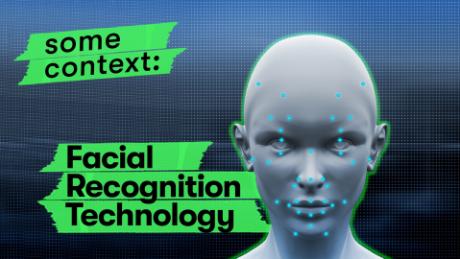America, please develop facial unrecognition technology
On the occasion of the banning of the facial recognition technology (FRT) in San Francisco, which is one of the major American cities, the city supervisor, Aaron Peskin said “facial recognition is “uniquely dangerous and oppressive.” “This is not an anti-technology policy,” he said, stressing that many tools used by law enforcement are still important […]

On the occasion of the banning of the facial recognition technology (FRT) in San Francisco, which is one of the major American cities, the city supervisor, Aaron Peskin said “facial recognition is “uniquely dangerous and oppressive.” “This is not an anti-technology policy,” he said, stressing that many tools used by law enforcement are still important to the city’s security. The ban comes after many studies have raised real concerns about civil liberties and the demonstrated instances of troubling racial and gender bias as well as the error rates. The apparent abuse of the technology by some governments, for example, for racial profiling, is a matter of international concern that has also drawn international condemnation.
The San Francisco’s Board of Supervisors voted eight to one to approve the ban, which will go into effect in June 2019. The ordinance would bar city agencies, including law enforcement, from using the tool, and require city agencies to get board approval for their use of surveillance technology. The city will also set up audits of surveillance tech already in use. Many cities have apparently approved similar transparency measures.
The plan, called the Stop Secret Surveillance Ordinance, was spearheaded by Mr. Peskin, and the ordinance drafted by Brian Hofer. In a statement read ahead of the vote, Peskin said it was “an ordinance about having accountability around surveillance technology.” As Jamie Condliffe of New York Times says in 17 May 2019, “that the ban was introduced by San Francisco, a city pivotal to the development of the technology, was viewed by some as a siren call.” (Silicon Valley is located in the San Francisco metro area.)
Virtually all high technology innovations of modern times have been developed in the US, and specifically by projects funded by the US military. For example, the foundation technologies behind the Internet, cell phone, night vision, radar, FRT, nuclear power, rockets, thermal imaging, biological warfare tools, and numerous other examples, originated from the US military. Via the dual-use categorization of some US military projects, developed technologies are made available in many cases to you and me and to the international community. In fact, in the case of software, the US even makes some of those software programs available for free download on the Internet to anyone interested in them. Many foreign countries take the technology and add their own layer of (secondary) innovation. However, whereas the US is a land of human rights, a few countries that re-engineer American-developed technologies are not. This is partly where the danger with FRT lies.
The way in which FRT is being used is a matter of public concern in modern societies. This is why it makes some sense to have a counter-technology available to the public. Remember the radar, which is being used by law enforcement in the US and elsewhere to determine speeding vehicles? Well, radar detectors have been around for almost as long as the radar system itself. As a student in the US in the early 1980s I had an office mate who had a radar device installed in his car to detect police radars ahead on the highway, so he could know when to reduce the speed at which his car was going and thereby avoid a police speeding ticket. Radar detector devices are much more common today, and are routinely installed in GPS and other navigational devices.
A similar “spoiler” technology is needed for FRT. Of course, the first step in protecting yourself against personal data abuse is to not help anyone obtain your personal data without your consent. That’s why you should first remove yourself from all social media platforms – Facebook, Twitter, Instagram, LinkedIn, Google Hangouts, and so on. Close them all out. Even WhatsApp represents some real danger to keeping your personal data private. After all, the app is owned by Facebook.
Technically speaking the FRT is conceptually quite simple. At some point, a picture of your face would have been taken and specific geometric/topological features extracted and stored along with your personal data, bio data, or metadata. By searching through such a database and making comparisons, any newly captured facial features can be evaluated to explore a match and present identification. Perhaps the most sophisticated component of FRT is the digital camera, which is a technology that has been around since 1975 and is well-understood.
In terms of ideas for an FRT-spoiler tool, or Face Unrecognition Technology (FUT), potential innovators could try to exploit the same technology behind FRT. The idea of an ultra-thin transparent face mask with special light-transforming properties should not be out of consideration; neither should the idea of a tiny, chip-based gadget – perhaps attached clandestinely to your eye glasses or your lapel – that could effectively temporarily disable the FRT camera.
You are able to talk and hear people on your phone, or send and receive data, via waves that travel through the atmosphere and even through concrete walls. Leveraging those waves to interact with the FRT device could be an effort in the right direction. I am convinced there are numerous other possibilities.
In conclusion, the deployments of the facial recognition technology have gone wild. America, please develop facial unrecognition technology, so we have an app for that soon.
